Facilities
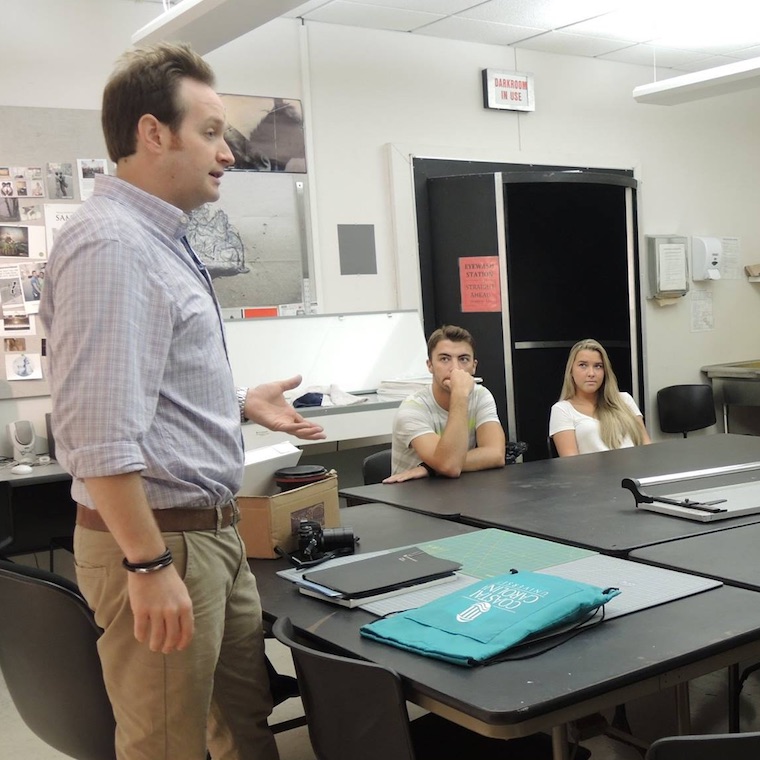
Foundations
The Foundations program at Coastal revolves around a core studio that features ample spaces for making, seminar discussion, and critique. iMac computers, printers, an industrial paper cutter, and a swath of design tools expose students to today’s modern making methodologies. In addition, foundations students have access to drawing, painting, and sculpture facilities as they begin their education.
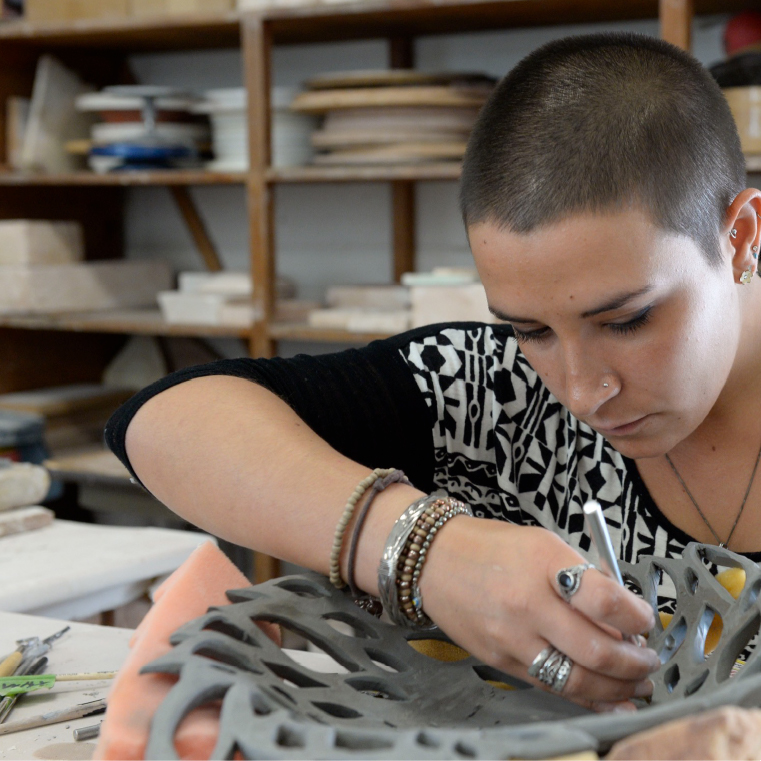
Ceramics
Ceramics has a large dedicated studio space that opens to our Hotworks courtyard. The studio includes a variety of work surfaces for hand building, wheel throwing, and clay casting forming methods with plenty of shelves for storing work. Additionally, it houses 2 slab rollers, 1 clay extruder, 13 motorized pottery wheels, 2 damp box drying cabinets, 2 ceramic 3D printers, 6 rolling ware carts, a clay room with a blunger, slip mixer, and pug mill for mixing clay, a glaze lab with a spray booth, and a kiln room with 3 electric kilns.
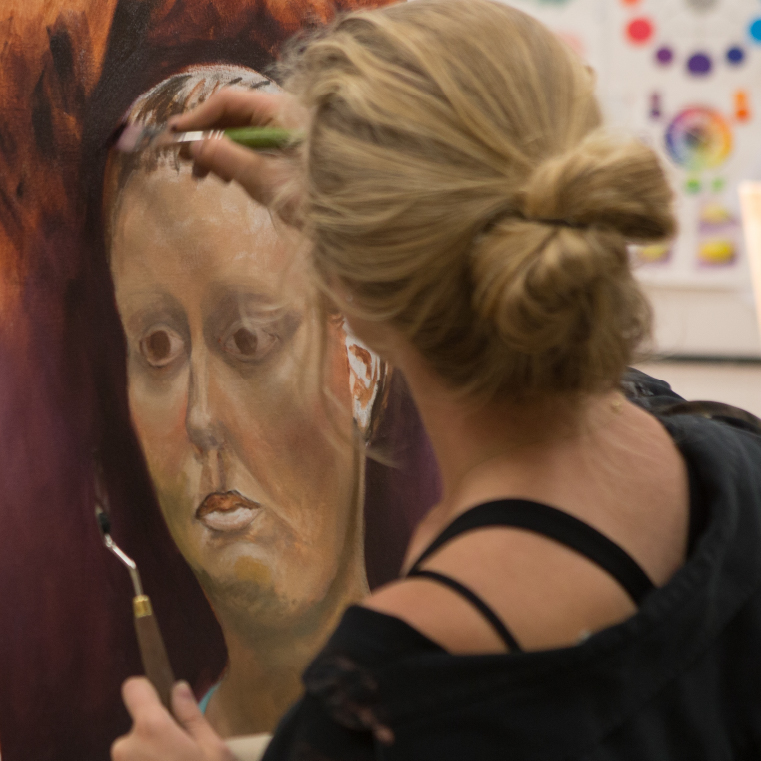
Drawing and Painting
The drawing and painting facilities include two dedicated studios with over 1000 square feet of combined working space. The fleet of available still life objects, access to the live model, and open studio hours create working spaces that build strong foundational drawing and painting skills as students grow toward conceptual practices. The painting space has built-in painting racks, stacked drawing drawers, over 30 easels, 18 taborets, and 19 drawing horses with access to our Hotworks area. The dedicated drawing room provides concentrated space for our foundations program which serves both Studio and Visual Communications majors.
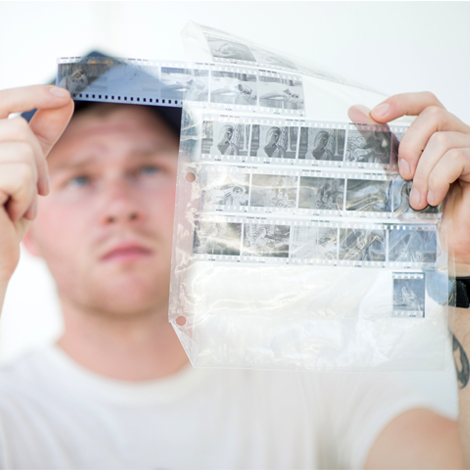
Photography
Photography occupies three spaces, and each contains industry-standard equipment. The primary photography classroom has an adjoining dedicated darkroom with 15 medium format enlargers, two large format enlargers, and two Amergraph ULF exposure units for alternative processes. The classroom also has a digital darkroom used for hybrid digital and wet processes. Digital Equipment available includes:
- 21.5" iMac workstation
- HasselbladFlextightX1 Virtual Drum Scanner
- Epson 3880 printer for printing digital negatives
The second photography studio is a shared computer lab with design. Equipment includes:
- 20 x 21.5” iMac workstations
- Epson 4900 Printer
- Epson 3880 Printer
- GTI Professional Print Viewing Booth
The third space is a maker space that is used by the entire visual arts department, as well as the studio lighting courses. This space is equipped with:
- Two 21.5” iMac workstations
- Epson V750 film and flatbed scanner
- Epson Surecolor P9000 Wide Format 44” Inkjet Printer
- Fully equipped lighting studio for photography
The department also has several analog 35mm, Medium Format and Large Format cameras available to students. Several types of Digital Cameras are available through the John Cage Equipment Checkout System.
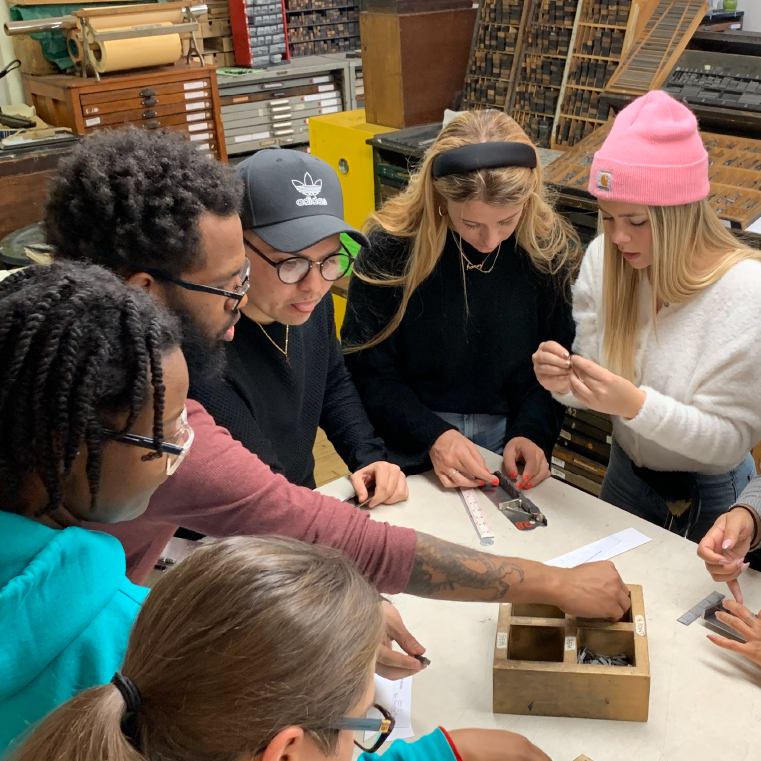
Print-Making
Printmaking has a dedicated studio that opens to the Hotworks courtyard. Within the studio space, you will find a 62” x 39.5” Takach etching press, a Laguna 26” x 48” etching press, a Takach-Garfield 25” x 44” lithography press, a large Theimer vacuum platemaker exposure unit, a plate cutter, and a suite of screen-printing equipment capable of exposing 50” x 72” screens. There are also flat files for print and supply storage.

Sculpture
Sculpture at CCU focuses on exposing students to a wide range of professional artistic processes while introducing a rigorous conceptual curriculum. A large indoor mixed-use space provides ample room for mold making, non-ferrous metalsmithing, and woodwork. Outside the Hotworks courtyard provides a space for forging, casting, and metal fabrication. Some highlights of the studio are a professional grade woodworking shop, three gas forges, MIG and TIG welding systems, an extensive collection of silversmith stakes, torches aplenty, and a furnace with a 180lb crucible capacity.

Graphic Design
The Graphic Design program has a combined Macintosh lab/traditional studio space equipped with 20+ iMacs, black and white and color laser printers, a color projector for viewing digital work and lecturing, and 20 drafting tables. A second Mac lab has 15 iMacs and a projector. All labs are stocked with the full suite of Adobe software.
The Graphic Design studios, one a combined computer and desk studio and one a computer lab which is shared with Photography, are equipped with 21 2008 model iMac computer workstations, all of which run the latest Adobe Creative Suite Premium software (including Photoshop, Illustrator, InDesign, Dreamweaver, Flash, and Acrobat). All computers have access to the internet and art student server storage space through an Apple Airport wireless network, which students who bring in personal laptop computers may also access.
The space includes an overhead projector and five scanners, including one that can scan source material up to 11 x 17. There are five printers: one HP large format color plotter (up to 36 wide and 9 long), one 2400 dpi Xerox color printer (up to 11 x 17), one black-and-white HP laser printer (up to 11 x 17), and two 8.5 x11 HP black-and-white-printers. We also offer, in the same dedicated studio/lab workspace, 20 drafting desks, two large dry-erase boards, a light table, and a full wall bulletin board for critiques. There is a flat file for storing student work, as well as shelving and cabinets.

Art History
The Art History program has two dedicated lecture halls fully equipped with state-of-the-art audiovisual equipment.
Art History classrooms are equipped with digital projectors, a document camera, and complete A/V set-up, including DVD/VHS players and stereo sound. Another classroom, shared with the Department of Theatre, features a new lab of ten Dell 3-D computer modeling workstations used by students to recreate ancient architectural structures digitally in three-dimensions. Art History faculty and students have access to flatbed and slide scanners, large format color printers, as well as online research and image-procuring resources such as ArtStor, Art Index, and J-Store.


